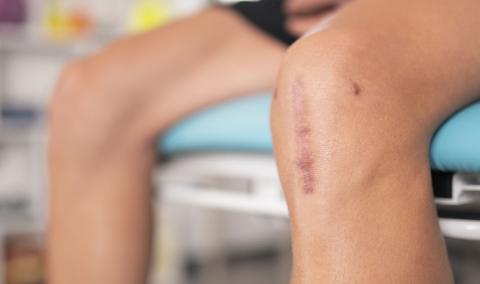It's natural for the prostate to grow with age. However, when it affects how you urinate, MU Health Care offers expert care and treatment options for an enlarged prostate, also known as benign prostatic hyperplasia (BPH).
BPH is characterized by an enlarged prostate putting too much pressure on the urethra. That pressure can slow or block urine flow and change how often or easily you go to the bathroom.
BPH affects approximately 50% of men ages 51-60. This percentage increases with age, affecting as many as 80% of men in their 70s and 80s.
BPH isn’t cancer and doesn’t raise your risk for prostate cancer, but it can get worse over time and negatively affect the bladder and urethra.
At MU Health Care, our board-certified urologists tailor your care to fit your needs. We’ll walk you through treatment options so you can choose what works best for your health goals.
Benign Prostatic Hyperplasia Symptoms
BPH affects everyone differently. It’s common for men to have no symptoms — or symptoms that seem mild enough to ignore. However, issues like urinary tract infections or bladder muscle damage can still develop over time. The most common symptoms of BPH include:
- Frequent urination: Needing to go more than eight times during the day.
- Nocturia: Waking up at night to urinate.
- Weak stream: Trouble starting, or a stream that feels slow or weak.
- Urgency or leakage: Sudden urges or difficulty holding it in.
- Discomfort: Straining or discomfort while urinating.
- Incomplete emptying: Feeling like the bladder doesn’t fully empty.
- Urinary retention: In severe cases, you may not be able to urinate at all.
Not all male urinary symptoms are due to BPH. Other conditions, such as diabetes, neurologic conditions, medication side effects, bladder conditions and more, can cause similar symptoms. This is why a comprehensive evaluation is necessary.
When to Seek Care for Benign Prostatic Hyperplasia
Even if symptoms seem minor, BPH can lead to complications like bladder damage or infections if left untreated.
Don’t ignore urinary changes or assume they’re just part of getting older. Talk to your doctor if you’re noticing symptoms.
Importantly, if you suddenly can’t urinate or can barely go, seek medical help right away.
Causes of Benign Prostatic Hyperplasia
BPH is a complex condition with multiple contributing factors. While the exact cause isn’t well understood, several factors may increase your risk:
- Aging: BPH becomes more common as men get older, though not all men develop it.
- Hormonal changes: Shifts in testosterone and DHT levels may play a role in prostate growth.
- Family history: Having a close relative with BPH may raise your chances of developing it.
- Lifestyle factors: Obesity, inactivity and poor diet can increase your risk.
- Related conditions: Diabetes, metabolic syndrome and long-term prostate inflammation may contribute to BPH.
How We Diagnose Benign Prostatic Hyperplasia
Prostate size is measured by volume in milliliters (mL). In general, a prostate larger than 30 mL (about the size of a ping pong ball) is considered enlarged. Prostates can enlarge all the way up to 500mL in size (about the size of a softball).
At MU Health Care, we start by reviewing your medical history, discussing your goals and performing a physical exam. Since urinary symptoms can have more than one cause, we’ll check for other possible conditions, too.
We may use several tools to diagnose BPH and personalize treatment options to your individual anatomy, history and goals, including:
- Blood and urine tests to check for infections or rule out other causes.
- Symptom questionnaires that evaluate how much your symptoms affect your daily life.
- Prostate-specific antigen (PSA) test to screen for prostate-related issues.
- Urine flow rate test to measure how quickly and fully you empty your bladder.
- Imaging tests like ultrasound, CT or MRI assess the size of your prostate.
- Cystoscopy, using a small camera to look inside your bladder and urethra for blockages or other problems.
How We Treat Benign Prostatic Hyperplasia
Treatment for BPH is highly personalized based on your anatomy, symptoms, overall health and prostate size and shape.
At MU Health Care, we start by understanding your goals and any factors — like medications or other conditions — that could impact your treatment options.
We’re proud to offer a wide range of nonsurgical and surgical treatments for BPH, including certain options which are not available anywhere else in mid-Missouri.
Medication Treatment Options for BPH
Medications available for BPH include:
- Alpha blockers: Helps relax the urinary system from the bladder outwards and can measurably increase your urine flow rate and reduce obstructive urinary symptoms.
- Alpha reductase inhibitors: Block the production of a substance that acts like food for the prostate, causing the prostate to shrink about 25% over time.
- Anticholinergics: Relaxes the bladder muscle by blocking specific signals, allowing urine to be stored in the bladder for a longer period.
- B3-Agonists: Relaxes the bladder muscle by targeting different signals than anticholinergic medications, allowing urine to be stored in the bladder for a longer time.
- PDE-5 inhibitors: Helps relax the prostate, making it easier for urine to flow through.
- Tamsulosin (Flomax) or finasteride: Can ease symptoms by relaxing muscles around the prostate or slowing its growth.
Like all treatment options, there are pros and cons with each BPH medication. For example, medications for BPH are generally low risk, and you can stop taking them anytime if you don’t like them. However, they can have side effects which may be bothersome to some men, especially sexual side effects.
Surgery or another procedure may be more effective for treating an enlarged prostate. Be sure to discuss with your doctor before starting any medication for BPH.
Procedures for BPH
There are several surgical and procedural options for treating BPH. Some are suitable for all prostate sizes, while others are only effective for certain sized prostates. More invasive treatments tend to carry greater risks but may offer better results, whereas less invasive options usually have fewer risks but might be less effective or not last as long. These may include:
- ReZum: This outpatient procedure uses steam to shrink excess prostate tissue for smaller prostates (30 to 80mL in size) — with no incisions and no general anesthesia.
- Aquablation: Surgery performed without incisions using an instrument placed through the urethra, where a large channel is cut into the prostate with high pressure water jets to remove some of the growth of prostate. Then, the remaining prostate is shaved down to control bleeding. This procedure is effective for prostates between 80 and 150mL in size.
- UroLIFT system: Small clips lift the prostate away from the urethra, improving urine flow without removing tissue.
- Prostate artery embolization (PAE): A radiologist blocks part of the prostate’s blood supply to help reduce its size. This is done through a small catheter and doesn’t require surgery.
- Green light laser photo vaporization of prostate: A surgery without incisions performed with an instrument placed through the urethra. A unique type of laser is used to vaporize prostate growth to open a larger urinary channel.
- Holmium laser ablation of the prostate (HoLAP): A laser removes excess tissue without incisions. This is often a good option for smaller prostates and offers minimal recovery time.
- Holmium laser enucleation of the prostate (HoLEP): Often considered the gold standard for larger prostates (over 40 mL and up to 500 mL), HoLEP removes more tissue using a precise, incision-free laser approach.
- Transurethral resection of the prostate (TURP): A long-standing and effective treatment, TURP removes prostate tissue through the urethra and is typically used for prostates under 80 mL.
- Simple prostatectomy (robotic or open): In select cases, part or all the prostate may be surgically removed. This can be done through open surgery or with robot-assisted, minimally invasive techniques
Why Choose MU Health Care for Benign Prostatic Hyperplasia Care
- Access to advanced laser procedures: We’re the only provider in mid-Missouri offering HoLEP and HoLAP — two of the most precise and effective laser treatments for BPH.
- Minimally invasive options with shorter recovery: From UroLift to water vapor therapy and prostate artery embolization, we offer leading treatments that relieve symptoms with faster recovery times.
- Treatment plans based on your health and goals: We look at your symptoms, prostate size, medications and overall health to guide an approach that fits you best.
- Coordinated care for complex needs: Our team works closely with other specialists, including cardiologists and primary care providers, to safely manage medications like blood thinners before surgery.
- Experienced BPH specialists: Our urologists perform a high volume of procedures each year and are trusted throughout the region for their expertise in routine and complex BPH care.



























